Utility Light Covers: Functions, Types, and Trends
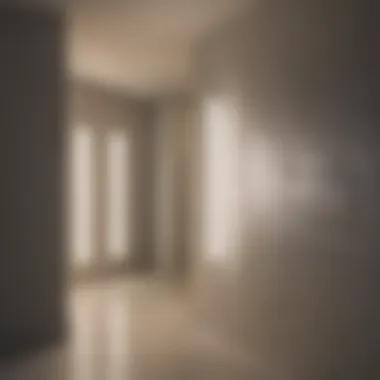
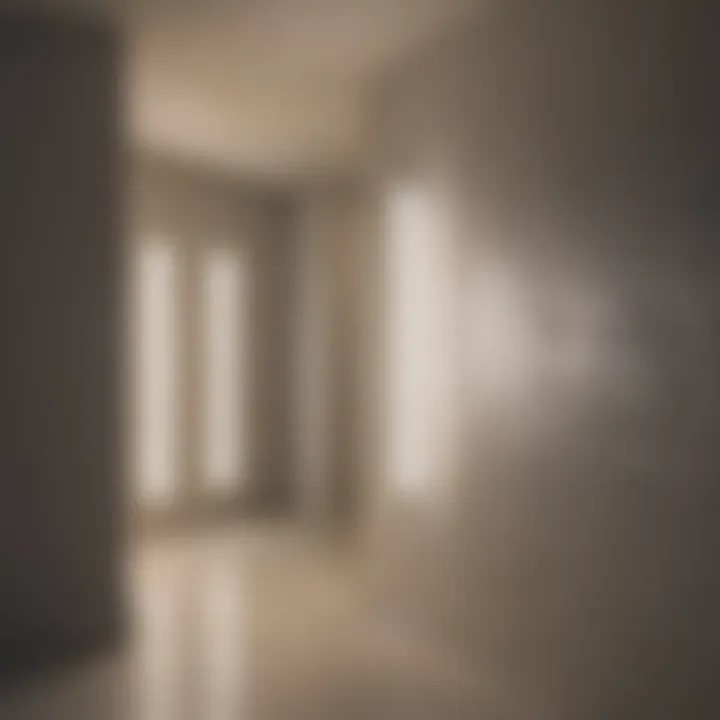
Intro
When one thinks about effective home illumination, utility light covers often slip under the radar. Yet, they play a crucial role in enhancing not just the aesthetics of a space but also ensuring safety and energy efficiency. Utility light covers are designed to protect light fixtures, provide a soft diffusion of light, and complement various interior designs. With the growing emphasis on sustainable living, these simple yet effective components have evolved significantly, showcasing innovation that marries aesthetic beauty with functionality.
Importance of the Topic
Understanding utility light covers goes beyond merely selecting a decorative accessory. For homeowners, they represent an intersection between technology and design, providing solutions that can lead to improved energy conservation and maintenance ease. In a space where proper lighting dictates mood, activity, and productivity, the right light cover directly impacts both the look and feel of a room. For anyone diving into home improvements, familiarity with these covers is a step towards creating a space that is as efficient as it is inviting.
Intro to Utility Light Covers
When discussing the realm of lighting solutions, the significance of utility light covers often does not get the spotlight they deserve. These unassuming components serve critical roles in various settings, ranging from homes to industrial sites. Not only do they safeguard the light fixtures from environmental elements, but they also enhance the overall aesthetic and functionality of the lighting system.
Definition and Purpose
Utility light covers are protective casings designed to shield light fixtures from dirt, moisture, and physical impacts. Essentially, they serve as a first line of defense for light bulbs and fixtures against external threats. Made from different materials like plastic, metal, or glass, their purpose extends beyond mere protection. They help diffuse light evenly, contributing to better visibility while minimizing glare, which can be particularly beneficial in space where light must be maximized without discomfort. The choice of cover can greatly influence not only how light is emitted but also how it harmonizes with existing decor.
Importance of Light Covers in Various Settings
Light covers play an essential role across various environments including homes, offices, warehouses, and public areas. In residential spaces, light covers contribute to safety by protecting bulbs from dust accumulation, which could lead to overheating and potential fire hazards. In commercial settings, the durability and toughness of covers become invaluable, especially when fixtures are exposed to heavy traffic or high-impact activities.
"A simple cover can be the difference between a burnt-out bulb and a safer living space."
In outdoor settings, such as parks or patios, covers crafted from weather-resistant materials ensure lights withstand rain, wind, and temperature variations. Meanwhile, in hospitals or schools, compliance with safety standards necessitates high-quality, reliable covers that promote both function and aesthetics.
As the world approaches a more environmentally-conscious mindset, the role of these light covers is steadily expanding.
Their importance cannot be overstated; they not only offer effective illumination but also complement the interior design, seamlessly melding function with fashion. A well-chosen utility light cover can add a touch of elegance or a modern edge, depending on the desired aesthetic.
Types of Utility Light Covers
Understanding the different types of utility light covers is crucial for anyone looking to make informed decisions about their lighting needs. Each type offers unique benefits and considerations that can greatly influence both functionality and aesthetics in various settings. The choice of light cover can affect not only the look of your space but also its safety and energy efficiency. Therefore, exploring the strengths and weaknesses of these various options helps homeowners and designers to choose wisely.
Plastic Covers
Plastic covers are often the most commonly used type of utility light covers, favored for their versatility and cost-effectiveness. Made from materials like polycarbonate or acrylic, they are lightweight, shatter-resistant, and available in various shapes and sizes. One of the primary benefits of using plastic covers is their ability to diffuse light evenly, creating a warm and inviting atmosphere.
Moreover, these covers are generally easier to install and maintain compared to other materials. An added plus is their resistance to corrosion, making them particularly suitable for damp environments such as bathrooms or kitchens. However, it’s important to remember they may yellow over time when exposed to sunlight, so selecting high-quality options can mitigate this issue.
Metal Covers
When it comes to durability, metal covers take the cake. Typically crafted from materials such as aluminum or steel, these covers are robust and designed to withstand impact and harsh weather conditions. They are particularly well-suited for outdoor installations or in industrial settings where ruggedness is a must.
Metal covers tend to have a more modern and sleek appearance, making them popular in contemporary architectural designs. These types of covers are often treated to resist rust and corrosion, which gives them a longer lifespan compared to their plastic counterparts. However, the initial investment can be steeper and they may require a bit more effort to install due to their weight.
Glass Covers
For those who prioritize aesthetics, glass covers are hard to beat. They come in an array of styles and finishes, from frosted to clear, allowing for a wide range of design possibilities. Glass not only adds a touch of elegance but also allows for maximum light transmission, making spaces feel bright and airy.
However, practical considerations must be taken into account when using glass covers. They are more fragile than plastic or metal, which means that careful handling during installation and cleaning is crucial. Additionally, glass can be heavier, potentially complicating the installation process. For residential settings, these covers are often used in dining or living areas where ambiance plays a significant role.
Composite Materials
Emerging as a popular choice, composite materials have started to make waves in utility light covers. These covers combine two or more materials to capitalize on the strengths of each while mitigating their weaknesses. For instance, a composite cover may feature a plastic core for lightweight durability, encased in metal or a glass finish for that aesthetic appeal.
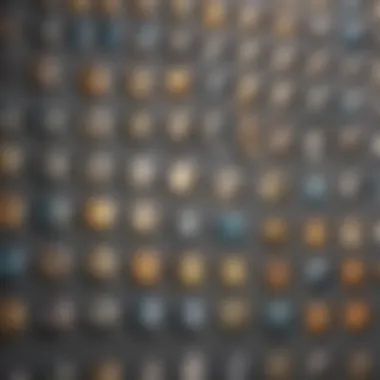
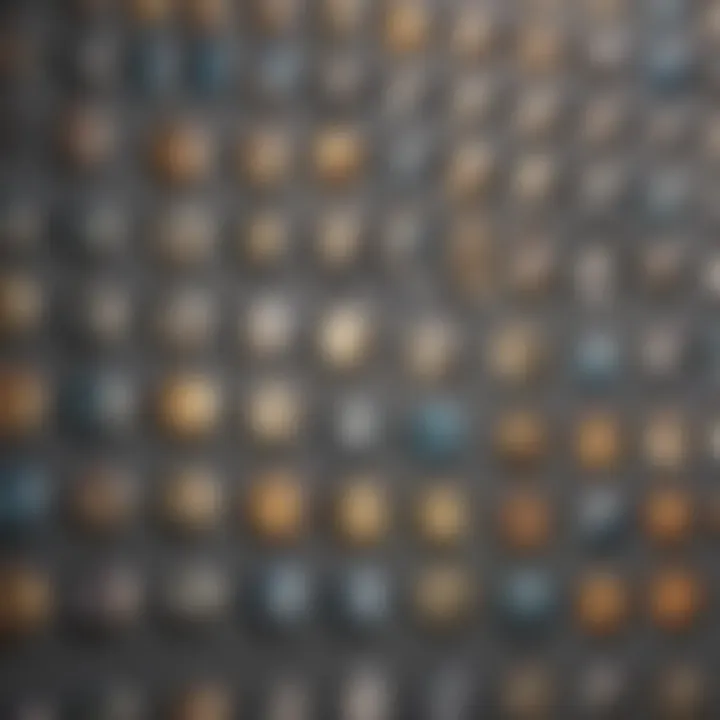
Such covers are designed to resist common issues like fading, cracking, or warping under extreme conditions. The flexibility in design combined with functional durability makes composite covers a fantastic option for diverse applications. They are particularly well-received in environments where both style and endurance are priorities, though they often come at a higher price point.
Functional Benefits of Utility Light Covers
Utility light covers serve as more than just an aesthetic addition to lighting systems; they pack a punch when it comes to functionality. Understanding these benefits can greatly influence decisions made during the selection and installation process. They act as protective barriers, ensuring the longevity of light fixtures, while also enhancing energy efficiency and safety across various environments. Let’s delve into the specific advantages these covers bring to the table.
Protection from Environmental Elements
Utility light covers provide essential protection against a variety of environmental factors. From rain and snow to dust and debris, these covers guard light fixtures effectively. In outdoor settings, weather can be unpredictable, and without proper covers, lights are susceptible to damage leading to costly replacements.
For instance, consider a patio equipped with hanging lights. Without durable weather-resistant covers, those fixtures can deteriorate quickly, leading to short-circuits or even outages. The inclusion of covers, such as polycarbonate or acrylic ones, not only extends the life of the lights but also maintains their functionality by shielding them from environmental strains.
Key Protection Features:
- Weather Resistance: Covers prevent water ingress and shield against UV exposure, which can damage light components.
- Durability in Vandal-Prone Areas: In places prone to damage or vandalism, certain covers made from resilient materials can deter user interference and accidental breakage.
- Reduced Maintenance Needs: By protecting fixtures, covers lead to fewer repairs and replacements over time.
"A sturdy cover can make all the difference in keeping outdoor lights shining bright, regardless of the weather."
Energy Efficiency Enhancements
Beyond protection, utility light covers can also play a pivotal role in energy efficiency. Thoughtfully designed covers can help in diffusing light better, leading to improved illumination while potentially lowering energy costs.
When light fixtures are equipped with transparent or semi-opaque covers, they can distribute light more evenly throughout a space. This means fewer bulbs are required without sacrificing brightness. Additionally, certain materials are created to reflect light more effectively; these can optimize performance by concentrating light output where it is needed most.
How to Maximize Energy Efficiency:
- Use Proper Lighting Technology: When combined with energy-efficient LED bulbs, light covers can amplify the energy-saving qualities significantly.
- Choose Reflective Materials: Some covers are designed specifically to reflect light, reducing energy usage while enhancing brightness.
- Maintain Cleanliness: Regular cleaning of covers leads to enhanced brightness and energy efficiency since dirt buildup can hinder light output efficiently.
Safety Features
Safety is a critical consideration when dealing with lighting solutions in any space. Utility light covers are designed to enhance safety by reducing the risk of accidents and injuries. They provide a buffer between the light source and potential hazards, especially in residential and commercial environments.
The absence of covers can lead to exposed bulbs or sharp edges, creating a risk for burns or cuts. Consider the scenario of a busy hallway in a family home. Without covers, children or pets could easily bump into light fixtures, leading to injuries. In contrast, well-designed utility light covers add not just a layer of safety but peace of mind.
Safety Advantages Include:
- Tempered Glass for Robustness: Many covers are made from materials that can withstand impact, ensuring minimal risk of breakage.
- Heat Resistance: Certain covers are built to handle high temperatures, reducing the risk of fires or burns.
- Non-Slip Features: Some outdoor covers include designs that reduce slipping hazards, especially during rain or frost.
Every piece of the puzzle—from environmental considerations to energy savings and enhanced safety—adds to the comprehensive understanding of utility light covers. Choosing the right cover isn't merely a decorative choice; it strategically enhances the functionality and safety of lighting setups across all applications.
Design Considerations
When it comes to utility light covers, the design considerations can’t be brushed off as mere aesthetics. They serve several pivotal roles, influencing how light is diffused, the durability of the fixtures, and even how they fit into your overall home decor. Striking the right balance between functionality and visual appeal can make a world of difference.
Aesthetic Appeal
The aesthetic appeal of utility light covers is like the icing on the cake. Selecting the right cover can transform a plain lighting fixture into an integral part of your interior design.
Imagine walking into a kitchen where the hard light from a bare bulb casts harsh shadows. It’s not exactly cozy, right? Now picture that same space with beautifully designed frosted glass covers. The light diffuses softly, adding warmth and a welcoming glow. With a wide array of designs available, from sleek modern looks to more traditional styles, it’s easy to select covers that complement your personal taste.
Moreover, colors and finishes play a vital role. A brushed nickel finish may fit well in a contemporary home, while antique bronze might add character in a rustic environment. The ability to choose can elevate not just the lighting but the entire atmosphere of a room.
For instance, a decorative utility cover in a unique shape or pattern can become a conversation starter, sometimes even serving as a piece of art. Embracing unique designs enables homeowners to express their individuality while ensuring functionality is never compromised.
Compatibility with Existing Lighting
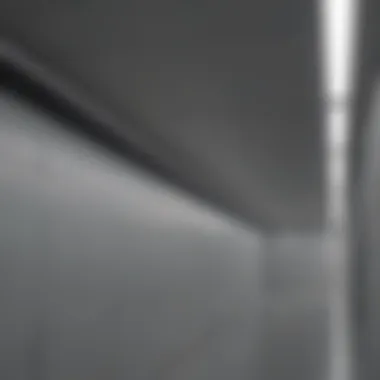
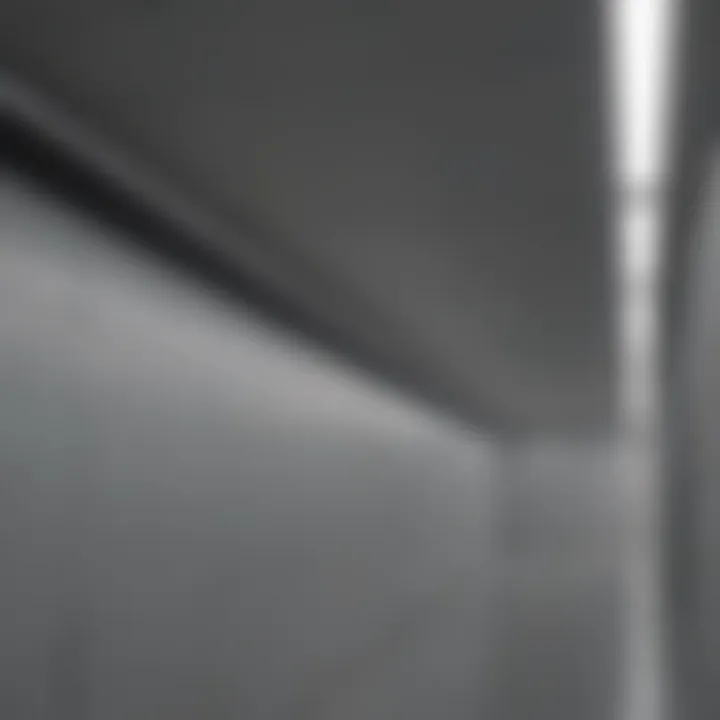
When it comes to the compatibility of utility light covers with existing lighting, it's a puzzle that many homeowners face. Ignoring this aspect can lead to a mismatch that detracts from both function and aesthetics. With numerous types and styles of lighting, finding a cover that aligns seamlessly with your fixtures can feel daunting.
First off, consider the type of fixtures you have—whether they're flush mounts or hanging pendant lights. This helps narrow down options right off the bat. For example, if you have soft pendant lighting in your dining area, a glass cover allows for light diffusion while keeping the style cohesive. On the other hand, fitting a rugged metal cover on a delicate fixture is akin to putting a square peg in a round hole; it simply won't work.
It's equally important to assess the size and shape. A large, open cover might drown out the beauty of a small fixture, while a too-small cover could feel awkwardly out of place. Aim for a well-balanced look that not only enhances the existing lighting but also aligns with your home's overall design.
Additionally, keep in mind the light output. Some covers can dim the brightness or alter the tone of light. Make sure the cover complements the light bulb type you're using—think LED versus incandescent—to maintain the intended effect.
"Always remember: a good design isn’t just about looking pretty; it has to work harmoniously with what’s already there."
By paying attention to aesthetics and compatibility, you enhance not only the beauty of the light covers themselves but also achieve a seamless integration that elevates your entire living space. These design considerations are essential for creating an environment that is both functional and inviting.
Installation of Utility Light Covers
When you think about utility light covers, it’s easy to focus on their purpose or design. But, the real magic happens during the installation. Proper installation sets the tone for how well these covers will perform and how long they will last. When planning to install a utility light cover, a couple of basic yet crucial elements come into play—the ease of installation and the potential safety benefits. An adequately installed light cover ensures that the fixture operates efficiently, effectively blocking any unwanted debris, while also being aesthetically pleasing.
Understanding the installation process also aids in avoiding common pitfalls that could lead to mishaps. Not following the right steps could mean redoing the work and wasting time and resources. Therefore, it’s imperative to tackle this aspect with care.
Step-by-Step Installation Process
Let's break down the installation process, making it as clear as a bell:
- Preparation:
- Power Down:
- Removing the Old Cover:
- Inspecting Components:
- Installing the New Cover:
- Testing:
- Final Check:
- Start by ensuring that you have all the necessary materials ready. Clear the workspace to prevent any accidental bumps and bruises.
- Always begin by turning off the power supply to the light fixture you are working with. Safety first, after all!
- If you're replacing an old cover, take it off carefully. A sturdy twist or a gentle pull will usually do the trick, but keep an eye out for any stubborn screws.
- Check the fixture for any wear or damage. Ensuring that the socket and wiring are intact is essential before proceeding.
- Now comes the fun part: fitting the new utility light cover. Align it correctly with your fixture, ensuring that all sides are balanced. If you're using screws, it’s time to get those snugly in place.
- Turn the power back on and test your light. Everything should be lighting up like a Christmas tree. If not, revisit your steps to diagnose any issues.
- Make sure that the cover is secure and that there are no loose ends. A well-installed light cover shouldn’t wobble or shift.
This methodical approach allows not just a successful installation but reduces the chances of needing to make adjustments or repairs in the near future.
Tools Required for Installation
Having the right tools can streamline the installation process significantly. Here’s a rundown of what’s typically needed:
- Screwdriver (preferably a Phillips head or flat head, depending on the screws used)
- Pliers (for any wiring adjustments)
- Wire Strippers (if you're also dealing with wiring work)
- Level (to ensure your cover sits evenly)
- Measuring Tape (for any precision fitting)
Incorporating these tools into your setup can make a world of difference. Imagine struggling with the wrong screwdriver just to find out it's not the best fit—talk about a headache!
Maintenance and Care
Maintaining utility light covers is often overlooked, yet it plays a pivotal role in ensuring their longevity and optimal performance. Regular care not only extends the lifespan of these covers but also impacts the overall safety and efficiency of your lighting systems. Particularly for homeowners and housewives who prioritize a safe and beautiful environment, understanding how to maintain these elements effectively is key.
Regular Cleaning Procedures
Keeping utility light covers clean is essential to prevent buildup that could impair functionality. Here's how to go about it:

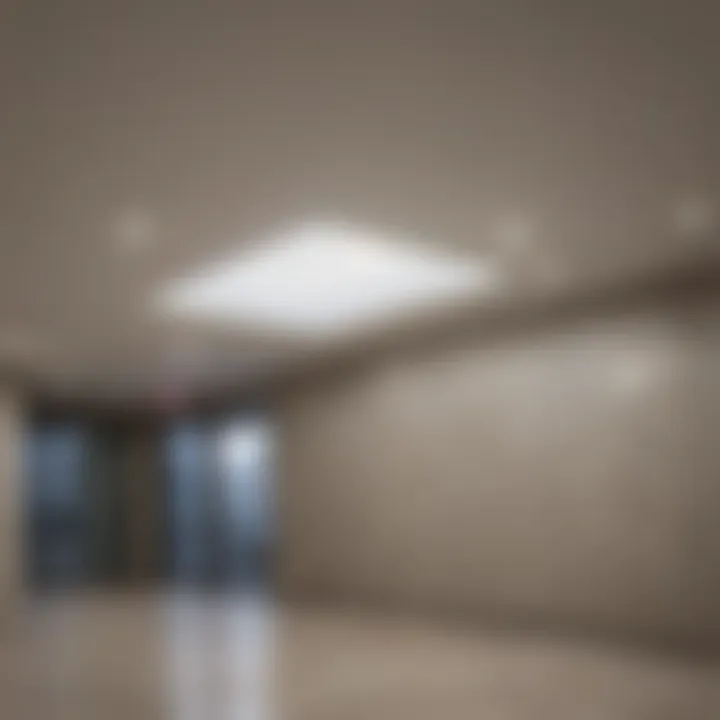
- Frequency: Aim to clean these covers at least every three months. In dusty environments, more frequent cleanings might be necessary.
- Materials Needed: Gather a soft cloth, a mild detergent, and a gentle scrubbing brush.
- Cleaning Steps:
- Turn off the power to the fixture. Safety first!
- Dampen your cloth with soapy water and gently wipe the cover, avoiding harsh chemicals that can cause discoloration.
- For stubborn stains, use a soft brush to scrub lightly.
- Rinse with clean water and dry immediately to prevent water spots.
Tip: Always check manufacturer instructions for specific cleaning recommendations, as some materials may require special care.
Common Issues and Solutions
As with any home maintenance project, some common issues can arise with utility light covers. Knowing the typical hiccups and how to tackle them is invaluable:
- Yellowing of Plastic Covers:
Over time, exposure to UV light can cause plastic to yellow. Light sanding with fine-grit sandpaper followed by a UV protectant can help restore their clarity. - Cracks and Chips:
If the cover shows cracks, replacing the cover is often the best option. Small chips may be repaired with transparent adhesive or epoxy, but the result may not be as aesthetically pleasing. - Dirt Build-Up:
Sometimes, despite regular cleaning, dirt can accumulate in hard-to-reach areas. A vacuum cleaner with a soft brush attachment can help remove debris from fixtures without damaging the cover.
By prioritizing these maintenance practices, you ensure that your utility light covers not only serve their purpose but also contribute to the ambiance and safety of your home. A little TLC goes a long way!
Innovative Trends and Technologies
In the ever-evolving domain of utility light covers, innovative trends and technologies emerge as crucial factors driving both functionality and design. As households and businesses alike strive for increased efficiency and aesthetic appeal, understanding these trends matters greatly. From environmental responsibility to the integration of smart technologies, the next generation of utility light covers invites homeowners to rethink their lighting choices.
Smart Lighting Integration
Smart lighting integration represents a forefront shift in how utility light covers can be optimize. By synchronizing lights with smart home systems, users achieve a seamless interactive experience. Imagine this: being able to adjust the brightness or color of your lights merely through your smartphone or voice command. It's not just about convenience; this feature enhances energy management, allowing households to tailor their lighting to their daily routines.
With smart technology, utility light covers can enhance their function by offering data-driven insights. Think of motion sensors that help ensure lights are only on when needed, which translates to less energy wasted and lower bills. Moreover, these systems often incorporate safety features, such as automatic illumination during emergencies, providing peace of mind for families.
Here are some benefits of integrating smart lighting with utility covers:
- Remote Accessibility: Control your lights from anywhere.
- Energy Monitoring: Track usage and reduce waste.
- Customizability: Adjust settings to fit your lifestyle.
- Enhanced Security: Lights that respond to movement improve safety.
Sustainable Materials Choices
Another exciting trend is the choice of sustainable materials in the manufacturing of utility light covers. As consumers become more eco-conscious, they seek products that leave a smaller environmental footprint. This consideration leads to materials that are not only durable but also recyclable or made from recycled sources.
For instance, light covers made from bioplastics or sustainably sourced wood capture attention. These options offer an eco-friendly alternative to traditional plastics, often produced from fossil fuels. Homeowners looking to refresh their homes can do so with a clear conscience, knowing their choices favor the planet.
Adopting sustainable materials presents both responsibility and potential savings.
- Lower Carbon Footprint: Choosing sustainable options contributes to environmental protection.
- Longer Lifespan: Many sustainable materials exhibit increased durability.
- Aesthetic Variety: Eco-friendly materials can add unique visual appeal to spaces.
- Resale Value: Homes with eco-conscious features often hold greater market appeal.
"Utilizing sustainable materials not only benefits the environment but enhances the character of your home."
Culmination
In summarizing the significance of utility light covers, it becomes evident that they serve more than just a functional objective. These covers embody a blend of practical benefits and aesthetic qualities. They ensure that lighting solutions are not only protected from the elements but also operate efficiently and safely. Moreover, selecting the right utility light cover can considerably impact both energy consumption and the overall ambiance of a space.
Summary of Key Points
A few crucial points emerge from this discussion that deserve emphasis:
- Protection: Utility light covers shield fixtures from dust, moisture, and physical damage, ensuring the longevity of the underlying lighting systems.
- Energy Efficiency: By utilizing energy-efficient designs, these covers can help minimize energy costs, providing significant savings over time.
- Design Considerations: The integration of utility light covers can enhance the aesthetic appeal of spaces, blending functionality with design.
Understanding these key elements affirms the necessity of carefully selecting utility light covers that align with one’s needs, whether for a cozy home setting or an industrial environment.
Future Outlook for Utility Light Covers
Looking ahead, the development of utility light covers appears promising, driven by technology and environmental considerations. Innovations in materials, like sustainable options, are becoming increasingly common. These not only cater to eco-concerns but also ensure durability and effectiveness.
As smart technology continues to seep into our daily lives, smart lighting integration could become a fundamental aspect of utility light covers. Imagine covers that can adapt based on the lighting conditions or energy needs of a space, allowing for automatic adjustments and improvements in energy conservation.
Final Note
As technology evolves, so too will the capabilities of utility light covers, ensuring they remain a vital component in enhancing safety, service life, and efficiency of lighting solutions. Staying informed about these trends allows consumers and homeowners to make educated choices, leading to more functional and visually appealing environments.







